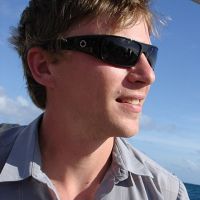Harpold et al., 2014
Changes in snow accumulation and ablation following the Las Conchas Forest Fire, New Mexico, USA
Harpold A.A., Biederman J.A., Condon K., Merino M., Korgaonkar Y., Nan T., Sloat L.L., Ross M. and Brooks P.D. (2014)
Ecohydrology 7(2): 440–452 Cross-CZO
-
Boulder, Catalina-Jemez, INVESTIGATOR
-
Catalina-Jemez, STAFF, COLLABORATOR
-
Catalina-Jemez, INVESTIGATOR
Abstract
Seasonally, snow-covered forests are a critical source of water in the Western United States and are subject to major disturbances, including fire, harvest, disease and insect-caused mortality, that have relatively unknown effects on water availability. In this study, we investigated changes in winter season snow accumulation and ablation in a forest following the Las Conchas fire in the Jemez Mountains of New Mexico. We investigated two competing sets of processes that should determine the peak annual snowpack prior to snowmelt: (1) reduced interception by forest canopy results in greater new snow accumulation and (2) increased winter season ablation of the snowpack results in reduced peak snowpack volumes. These processes were evaluated with approximately 800 spatially distributed manual observations of new snow, 1500 manual observations of peak snowpack, and light detection and ranging-derived snow depth, vegetation and terrain datasets collected prior to the fire. A single snowfall event yielded significantly larger snow depths in the post-burn area versus the unburned area (p < 0.001), with 25% to 45% interception in the unburned area and near zero in the post-burn area. Conversely, the peak snowpack depths were significantly larger in the unburned area compared with the post-burn area (mean of 55 and 47 cm, respectively), despite nearly identical peak snowpacks prior to the fire (72 and 72 cm, respectively). The lack of strong vegetation controls led to less variability at peak snowpack in the post-burn area and a shift towards topographically controlled variability, caused by differences in elevation and aspect, occurring at larger spatial scales. The unburned area had roughly 10% more water available for melt than the post-burn area, with winter season ablation reducing snowpacks by nearly 50% prior to melt in the post-burn area. The relative importance of shortwave radiation to the snowpack energy balance and sublimation suggests that the 10% reductions in peak snow water storage found in these north-facing areas could be a conservative estimate for winter season ablation following fire. Further work is necessary to assess the role that topography plays in altering water partitioning following forest disturbance and the potential implications for ecological health and downstream water resources.
Citation
Harpold A.A., Biederman J.A., Condon K., Merino M., Korgaonkar Y., Nan T., Sloat L.L., Ross M. and Brooks P.D. (2014): Changes in snow accumulation and ablation following the Las Conchas Forest Fire, New Mexico, USA. Ecohydrology 7(2): 440–452. DOI: 10.1002/eco.1363
 This Paper/Book acknowledges NSF CZO grant support.
This Paper/Book acknowledges NSF CZO grant support.
Associated Data
Jemez River Basin - LiDAR - Snow-on (2010)
4 components •
Jemez River Basin •
GIS / Remote Sensing •
Guo, Qinghua; Pelletier, Jon; Durcik, Matej
Explore Further



